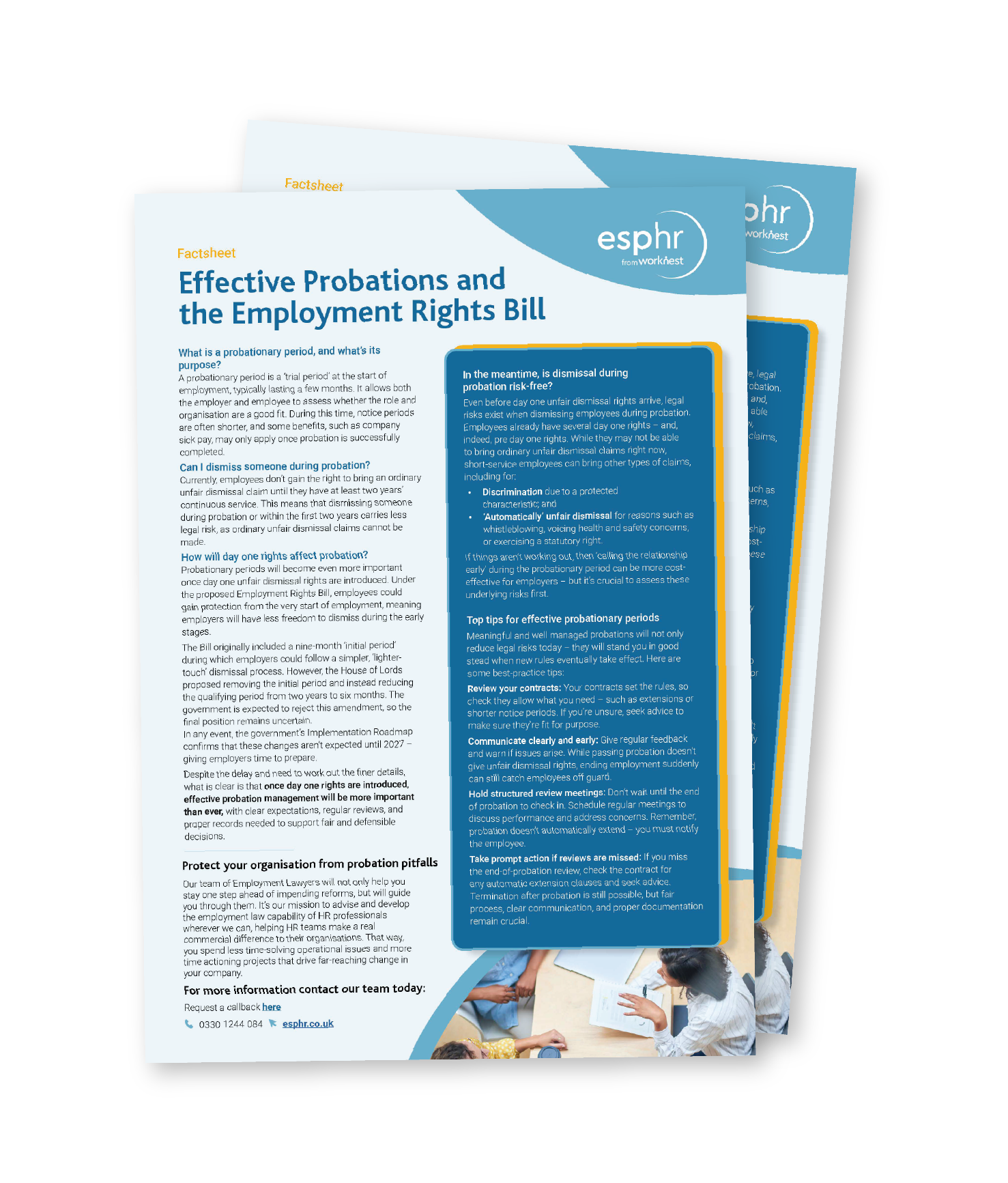It is a common misconception that a parent who has not given birth or is not the primary adopter is only entitled to paternity leave. There are various other types of leave and employment rights that partners (including a biological father, a secondary adopter, or the spouse, civil partner or partner of the mother) may be eligible for, both after the birth and as the child grows up.
Paternity leave
Partners who meet the qualifying criteria are eligible to take one or two weeks’ paternity leave, which may be taken in non-consecutive blocks of one week following amended Regulations in 2024. This leave must be taken within 56 days of the child’s birth.
While on paternity leave, employees are entitled to their usual contractual terms and conditions, except for their salary. Typically, they are eligible for Statutory Paternity Pay (SPP), which currently stands at £184.03 per week (April 2024 – April 2025) or 90% of earnings (whichever is lower).
They also have the right to return to their normal role with the same terms and conditions if they have only taken paternity leave. They must also not suffer any disadvantage by any act, or any intentional failure to act, by you as a result of them taking, or seeking to take, paternity leave.
Shared parental leave
Shared parental leave is a flexible form of leave available to both parents. If the eligibility and notice requirements are met, the new parents can decide how to share up to 50 weeks of leave to care for the child.
However, an employee who wishes to take both paternity leave and shared parental leave must first take paternity leave.
Currently, Statutory Shared Parental Pay (ShPP) is £184.03 or 90% of the employee’s average earnings (whichever is lower). Some employers choose to offer fully or partially paid paternity leave and/or shared parental leave to top up the statutory pay.
Parental leave
Employees with one year’s continuous service may also be entitled to 18 weeks of unpaid parental leave for each child. This can commence once the child is born or placed for adoption, but it is also available at any time up until the child’s 18th birthday. The employee must give the employer at least 21 days’ notice, in writing, of the date they wish to commence their leave and state how much leave they wish to take. An employer can only ask to postpone parental leave if it will cause undue disruption to the organisation. A person is protected against dismissal, redundancy and unfair treatment on the grounds of parental leave.
This is a separate right to leave which should not be confused with shared parental leave.
Time off for antenatal appointments
Expectant partners have the right to take time off work to attend antenatal appointments to support the child’s mother (or adoption appointments). They can attend up to two appointments, with each appointment capped at 6 hours and 30 minutes, but there is no legal requirement for employers to pay the accompanying partner for this time off.
Time off for dependants
Under the Employment Rights Act, all employees are entitled to take reasonable time off to care for dependants. This right allows employees to deal with emergencies and unforeseen matters involving a dependant.
New parents may exercise this right to time off for example to:
- make care arrangements for a child who is ill or injured
- cope with unexpected disruptions, termination or breakdown in care arrangements for the child
- manage an unexpected incident which involves the child during school time.
Employers are under no statutory obligation to pay for this time off. How long the employee can take will depend on the circumstances – it could be a few hours or a couple of days.
Request for flexible working
Although any employee who meets the eligibility requirements can apply to work flexibly, new parents may be particularly interested in requesting changes in order to take up care responsibilities.
They can request to change, for example:
- the hours they work (e.g. they want to work fewer hours)
- the times they are required to work (e.g. they wish to start at 10am rather than 9am)
- where they work (e.g. an employee wants to work from home on Wednesdays).
Remember, employees have a statutory right to request flexible working, but there is no right to flexible working. Therefore, you can refuse, but you must show that you have considered the request in a reasonable manner and have refused for one of a set list of permitted clear business reasons, for example, an inability to reorganise work amongst existing staff or an inability to recruit additional staff.




